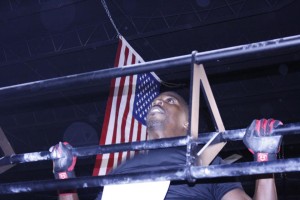
Gymnastics Strength Training is quickly becoming a key facet in CrossFit. Whereas in the past you simply needed to be able to kip a few pull-ups, toes-to-bar, and HSPU’s, nowadays there are a lot more movements and abilities being thrown into the mix.
At DCF we have a dedicated Gymnastics Strength Training class where you can make a lot of improvements just by fixing a few mistakes. Pick these low hanging fruits and make sure you are not making one of these gymnastics errors in training.
Error #1: Only practicing kipping variations instead of strict
There is a certain thrill and adrenaline rush when you first learn how to kip a movement, and it is tempting to never return to practicing the strict variation. However, relying on momentum to get you over the bar, above the rings, or off the floor can lead to an imbalance in strength and a potential risk for injury. Just like you would squat heavy to get stronger at the Olympic lifts, you need to practice strict gymnastics movements like legless rope climbs, ring muscle-ups, deficit handstand push-ups, and no-swinging, straight-legged toes-to-bar in order to get better at CrossFit.
Error #2: Only practicing handstand walking instead of static holds
The first time CrossFit tested its athletes with a handstand walk, we were all in awe at the former gymnasts among the bunch who seemingly traveled just as well on their hands as they did on their feet. It is only natural, after being so inspired, to immediately kick up and try your best to walk as far as possible on your hands. The big problem here, however, is that this sort of practice tends to be random, a bit chaotic, and typically counter-productive. Rather, spend more time holding a static handstand with your chest flat against the wall (you know, the way that most gymnasts first learned and practiced their handstand), and your handstand walking will improve by leaps and bounds (figuratively speaking).
Error #3: Only relying on passive shoulder mobility instead of active
It is no secret that CrossFit requires exceptional shoulder mobility. However, many athletes require a half-hour of mobility, several warm-ups, and the weight of their kip swing or overhead barbell to achieve an open shoulder position. These are all methods of passive shoulder mobility, but what many athletes actually need more of is active mobility. Think about strengthening your mid and upper back with more horizontal pulling movements (ring rows, bent-over rows, etc.), external rotation (dumbbells are your friend), and, you guessed it, chest-to-wall handstands. You should be able to lift your arms straight over your head with a flat lower back, tight abs, and neutral spine.
Get ahead of the competition by making sure you are not making these gymnastics errors in CrossFit today. Come by and check out our Gymnastics Strength Training Classes for more helpful tips and tricks.
